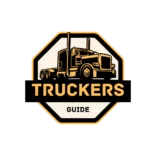What Does a Bill of Lading-(BOL) Include? A Trucker’s Guide
In the trucking and freight industry, the Bill of Lading (BOL) isn’t just paperwork—it’s the heartbeat of every shipment. Whether you’re a seasoned owner-operator, freight broker, or just starting out, understanding the BOL is crucial to protect your business and ensure smooth operations.
Let’s break down what a Bill of Lading includes and why each part matters.
What Is a Bill of Lading?
A Bill of Lading is a legal document between a shipper and a carrier that details the type, quantity, and destination of the goods being transported. It acts as:
- A receipt for the goods
- A contract of carriage
- A title of ownership for the shipment
Key Elements of a Bill of Lading
Here’s what you’ll typically find in a well-prepared BOL:
1. Carrier Information
Includes:
- Carrier name
- MC/DOT number
- Company address and contact info
This identifies who is responsible for transporting the freight.
2. Shipper Information
Details the origin:
- Shipper’s name
- Address
- Phone number
This is the person or company sending the goods.
3. Consignee Information
Who’s receiving the load:
- Consignee name
- Delivery address
- Contact details
4. Shipment Description
Clear details about what’s being hauled:
- Number of items/packages
- Type of packaging (pallets, boxes, crates)
- Description of goods
- Weight and dimensions
- NMFC freight class (for LTL shipments)
- Any hazardous material info
5. Pickup & Delivery Dates
- Scheduled pickup date/time
- Estimated delivery date/time
6. Special Instructions
- Notes about delivery (e.g., “call before delivery,” “liftgate required”)
- Handling instructions
These help avoid delivery issues or damage.
7. Freight Charges & Payment Terms
Check boxes for:
- Prepaid
- Collect
- Third-party billing
Also includes rate details and any accessorial fees.
8. Signatures
Legal acknowledgement from:
- Shipper
- Carrier
- Consignee
Each signature confirms acceptance and condition of the goods at each step.
Why Is the BOL So Important?
- Legal Protection: Proves what was shipped and its condition at pickup and delivery.
- Payment Verification: Acts as proof of delivery for invoicing.
- Dispute Resolution: Vital for claims in case of loss or damage.
Final Thoughts
Whether you’re moving freight across town or across the country, a properly filled Bill of Lading keeps everyone accountable and operations smooth. It’s more than a form—it’s your shipment’s safety net.
Need a ready-to-use BOL template? Download Our Free BOL Template Here
or click here if download does not start


